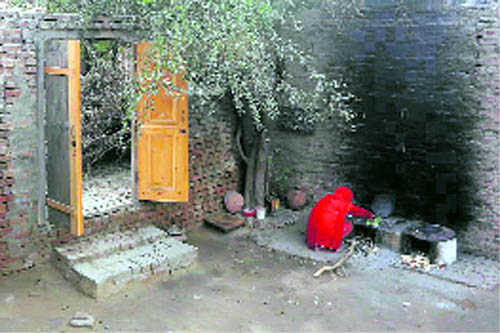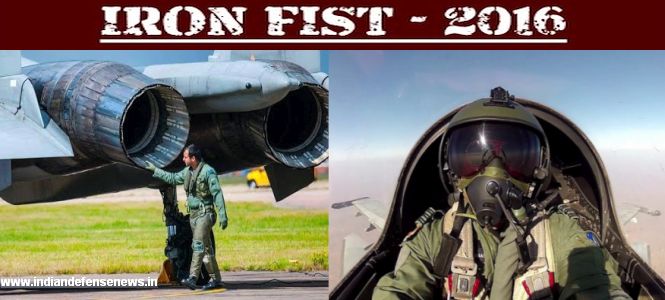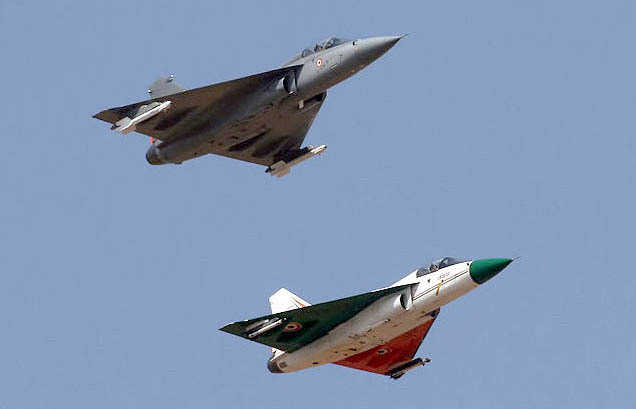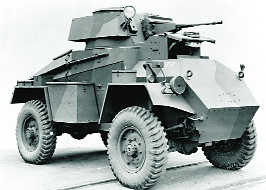
Indian nuke assets face insider threats: Report













Vishav Bharti
Tribune News Service
Chandigarh, March 21
Declared a heritage site two years ago, Shaheed Bhagat Singh’s birthplace Chak No 105 GB (now Bangay village) in Lyallpur (Pakistan) has been thrown open to the public after its preservation. Activists of Lyallpur are organising Sardar Bhagat Singh Mela in the village on March 23, his martyrdom day.In February 2014, then Faisalabad district coordination officer Noorul Amin Mengal had visited Bhagat Singh’s house and announced that the district administration would preserve the martyr’s birthplace as a heritage site by spending around Rs 5 crore (in Indian currency).Mengal, who had earlier served in Lahore, had initiated the process to rename Shadman Chowk after the martyr.Tohid Chattha, research scholar, Government College University, Faisalabad, who is one of the organisers of the mela, said the district administration’s initiative had motivated the civil society of Lyallpur to honour the martyr’s memory. “Apart from his house, the entire village is being developed as a tourist place. The school in which Bhagat Singh studied is also being preserved,” said Chattha.“We will discuss his ideas and local singers will sing his heroic songs, which are part of our folklore,” he added.Prof Jagmohan Singh, Bhagat Singh’s Ludhiana-based nephew, who has also done research on the martyr’s works, said the mela was first held in 1932, a year after Bhagat Singh’s martyrdom. “It continued till 1947 but stopped after that. Then, people in India started holding a similar mela at Khatkar Kalan (Nawanshahr),” he added.Welcoming Pakistan’s restoration plan, Prof Jagmohan Singh said it was testimony to the universality of Bhagat Singh’s ideas. “His ideas transcend the narrow barriers of caste, religion or borders,” he said.Earlier, the house was being owned by an advocate, whose ancestors have preserved some of the martyr’s belongings all these decades. But the district administration acquired it from him.The belongings included a spinning wheel used by Bhagat Singh’s mother, a copper kneading tray, two wooden trunks and a closet of steel.“The people of Faisalabad take pride in the fact that Bhagat Singh was the son of their soil. They want the place to be known by his name,” Mengal had said when the restoration work was started.Bhagat Singh was born on September 28, 1907, at Bangay village, 150 km from Lahore and 35 km from Nankana Sahib, the birthplace of Guru Nanak.
We sent a reminder to release the pending amount of ` 3 crore to the central government 10 days ago. Project work has been delayed because of lack of funds. SHIV CHARAN KUMAR, executive engineer, Markfed
SBS NAGAR: The project of building a museum dedicated to Shaheed Bhagat Singh at his native village, Khatkar Kalan, in the district has been left in the lurch for more than seven years.
HT PHOTOShaheed Bhagat Singh Museum at Khatkar Kalan village in SBS Nagar.The protracted delay has also increased the total cost of the museum from ` 8.45 crore to ` 18 crore. The land acquisition cost of about ` 3 crore is also included in it.
The executive agency for building the museum, Markfed, has been waiting for funds from the government, due to which the work was also stopped. As Shaheed Bhagat Singh’s martyrdom day falls on the coming Wednesday, some labourers reached the construction site.
It is pertinent to mention here that deputy chief minister Sukhbir Singh Badal is scheduled to address a rally at Khatkar Kalan on Wednesday, near the museum’s construction site.
Former Union home minister P Chidambaram had laid the foundation stone of the project on February 23, 2009, in the presence of the then Union minister for tourism and culture Ambika Soni and Punjab chief minister Parkash Singh Badal.
The museum was envisioned as a memorial to Bhagat Singh, Sukhdev, Rajguru, and more than 9,000 martyrs from Punjab who sacrificed their lives in the Indian freedom struggle.
As per the project, the existing building of the old museum was planned to be dismantled after the construction of the new building. For extension of the new museum, around 85 kanals of land was also acquired. The new structure will house the new museum, photo galleries, and an auditorium.
Earlier, Punjab Mandi Board was entrusted the work of constructing the new building, but after some time, Markfed was appointed the executive agency for the project.
Around 75% construction work of the museum has been completed by Markfed but completion of flooring, doors, windows, electrical fitting is awaited due to want of funds from the central government.
Executive engineer, Markfed, Shiv Charan Kumar said, “We sent a reminder to release the pending amount of ` 3 crore to the central government ten days ago. Work has been delayed because of lack of funds.”
He added that work regarding exhibits of martyrs, to be done by the department of tourism and cultural affairs, was still pending and museum work would be accomplished only after that.
Chief executive officer of Punjab Heritage and Tourism Promotion Board, Navjotpal Singh Randhawa, denied there were any issues related to the project. He said issues regarding land enhancement for the project had also been cleared and construction would be completed this year.


THE INTRODUCTION OF POLICE BANDS AND INSTRUMENTS LIKE THE SITAR AND TABLA IN THIS YEAR’S BEATING OF THE RETREAT ARE NOT IN CONSONANCE WITH MILITARY TRADITIONS
Harcharanjit Panag spent his early years in his village in Fatehgarh Sahib, while his father Colonel Shamsher Singh was away soldiering. Thus, the vigour and practicality of rural life was added to his formidable intellect. He stood first among army cadets in the 33rd Course at NDA and third in the order of merit at IMA.
Fighting in the Bangladesh Campaign with his battalion, 4 Sikh, he noted that infantry attacks were poorly planned without emphasis on fire and movement.
A topper on all courses, his focus remained on training. Posted to IMTRAT in Bhutan, he found fresh impetus to his ideas. Transferred to 5/5 Gorkha Rifles, an instructional appointment at IMA followed.
Panag’s great opportunity to employ his ideas on manoeuvre warfare came with a move to the mechanised infantry.
He laid stress on the concept of reconnaissance, thoroughly understanding the subject after a course in the USSR.
Serving with 9 Mech, he took over the command of 1 Mech, moving the battalion to Ladakh, a pioneering effort.
The general had a number of instructional assignments, including two at the staff college, involving academic development.
Another foreign assignment involved setting up a staff college in Zambia.
After command of an armoured brigade and a general staff job, he led the Battalik Brigade. Here, he captured Point 5310 in difficult terrain using the troops of 14 Sikh.
Pan ag later commanded 33 Ar moured Division during the military stand-off of Operation Parakram. He put his expertise in reconnaissance acquired in the USSR to good effect.
A move to Army HQ as the director-general of military training was used by him to try out and implement his ideas. Command of the Desert Strike Formation, XXI Corps, followed.
The pinnacle of his career was his tenure as Nor ther n Ar my Commander, where he refocused ideas, improved skill levels, imparted realistic training, ensured reduction in human rights violations and lessened the emphasis on the notorious body-count syndrome.
The general laid stress on ethics and moral superiority.
This crusading zeal led to his lateral move to Central Command for reasons other than professional. (Next month: How General Panag
implemented his ideas.)
A MOCKERY OF MILITARY TRADITIONS
Beating the Retreat is an ancient military observance denoting the playing of drums, bugles or other musical instruments to recall troops out on patrol or the end of the day’s fighting. As such, this is a ceremony exclusive to the military and must remain so for reasons of élan and tradition. The induction of bands from the police and central armed police forces in this year’s Beating the Retreat ceremony at Vijay Chowk struck a jarring note.
Out of place also were Indian wind and percussion instruments introduced for the first time.
The function of military bands is to play while on the march, the objective being to enable troops to keep in step and at the same time uplift their morale.
Instruments like the sitar and tabla, while superlative in their musical worth, just cannot fill this role.
Indian instruments that can be played while on the march are among others the sringa (blowhorn) and the nagara (drum).
However, these did not find a place in the programme. Earlier, Indian troops were led by bands playing dhol and sarnai. But these soon faded away being replaced with Western instruments.

Ajay Banerjee
Tribune News Service
New Delhi, March 10
The Indian Air Force today sounded an alarm saying it does not have enough fighter jets to tackle a simultaneous two-front war with Pakistan and China.Vice-Chief of IAF Air Marshal BS Dhanoa said at a press conference: “Our numbers are not adequate to fully execute an air campaign in a two-front scenario. Probability of a two-front scenario is an appreciation that you need to do. But, are the numbers adequate? No. The squadrons are winding down.”He was asked if the IAF had the capability to fight a two-front war. “We have conveyed our concerns to the government (which) is seized of the problem,” said the IAF Vice-Chief, a Kargil war veteran.The IAF is now at its lowest combat strength in more than a decade. The Tribune was the first to report this in its February 25 edition. The IAF has informed the government of the gravity of the situation.Three squadrons of the vintage single-engine Soviet Union origin MiG-21 and MiG-27 have been phased out as on January 1 this year, leaving the IAF with only 33 squadrons (16-18 planes in each).This is nine short of the government-mandated 42 squadrons needed to tackle a simultaneous two-front war with China and Pakistan.Of the 33 squadrons, the vintage MiG-21 and MiG-27 aircraft form 11 squadrons. The Sukhoi 30-MKI populates 11 squadron, British Jaguar of 1970s is in six squadrons followed by French Mirage 2000 and Soviet Union’s MiG-29 in two and three squadrons, respectively. The last three are being upgraded with better missiles and avionics.The country is now facing the reality of projections on IAF fighter fleet made separately over the past 10 years by the Indian Air Force, strategic thinkers, successive reports of Parliamentary Committees on Defence and the reports of the Comptroller and Auditor General (CAG).Warnings on the “lackadaisical pace” of induction of new fighter jets into the Indian Air Force and the resultant loss of “combative edge” in battle were now ringing true, sources said.

Vijay Mohan
Tribune News Service
Chandigarh, March 8
The war horses of yore that had once blazed a trail of glory across battlefields in India and abroad have come alive to commemorate the platinum jubilee of the Army’s “Ghost Regiment”, a sobriquet earned by 63 Cavalry for the shock and awe its tanks created during the 1971 Indo-Pak War by converging on the enemy from four cardinal directions without any warning.A number of vintage tanks and armoured cars have been restored to running condition and these would be participating in a special parade being organised to commemorate the event at the regiment’s location in Amritsar later this week.The showpiece of the event would be American M-113 Bradley, which would be rumbling on Indian soil for the first time. Interestingly, the regiment was also the first to use this equipment before the Americans inducted it in their inventory.The American Cadillac Stuart-VI tank, British Humber and Daimler “Dindo” armoured cars, which are of World War-II vintage and saw action in various theatres in Europe, Africa and the south-east, along with the more recent PT-76 light amphibious tank and the T-55 tank, both of Soviet origin, are among other vehicles participating in the parade, besides the present generation of T-72 tanks that 63 Cavalry now operates.“The vintage vehicles were brought in from various military stations where they were either displayed as war trophies or were lying in storage,” a regimental officer said. “These were repaired and restored in our own regimental workshop over a period of two months,” he added.Raised at Alwar on January 2, 1957, 63 Cavalry was the third armoured regiment to be raised post-Independence. It served in Congo in 1961-62 under the United Nations mandate, where it earned 12 gallantry awards, and consequently its Humber armoured cars were airlifted to Chushul in wake of the 1962 Chinese aggression. During the liberation of Bangladesh in 1971, it was the only armoured regiment in the Eastern Theater that reached Dacca. It was bestowed with the Battle Honour “Bogra” and Theatre Honour “East Pakistan” and earned eight gallantry awards.
The sources from Ministry of Defence, however, said that the step was taken keeping people’s security in consideration.
The Indian Army, which has built a pontoon bridge on the Yamuna for the Art of Living Foundation’s upcoming World Culture Festival, is likely to build one more to ease movement of lakhs of people who are expected to attend the controversy-ridden mega event.
The development came even as there was criticism from some quarters, including the social media, about using Army to build the floating bridge for such an event.
Social media seemed averse to the use of soldiers to build the bridge for such an event:
Entire GoI & its defence forces seems to have laid itself at the service of the #SriSri-where is the hope for Yamuna?https://t.co/sSQk7JuWaS
— girish nikam (@girish58) March 7, 2016
Instead of private contractors, Indian army soldiers are constructing the pontoon bridges for Sri Sri’s event!pic.twitter.com/1zfFLr4BKC
— santhosh kottayi (@kottayimavoor) March 5, 2016
Indian Army tasked to build floating bridge for Art of Living event Crazy!!
— Yusuf (@YusufDFI) March 7, 2016
Ministry of Defence (MoD) sources on Monday said the army’s help was sought in view of security and safety concern of lakhs of people expected to throng the function. MoD sources said it was not for the first time that the army was engaged in building bridges for an event. “Army personnel have made pontoon bridges during Kumbh mela. The army has even constructed a foot over bridge for the Commonwealth Games after a bridge collapsed a few days before the games commenced.”
Besides these, said MoD sources, the army has been requested to construct six pontoon bridges on the Yamuna, but they are making just one. “However, after the Delhi Government and the Delhi Police raised their concern over the safety and security, including chances of stampede, there is a possibility that the army will build another bridge as well,” said sources.
According to reports the event will feature yoga and meditation sessions, peace prayers and traditional cultural performances from around the world.
With agency inputs

Tribune News Service
Srinagar, March 5
As many as 242 recruits from J&K were inducted into the Army’s Jammu and Kashmir Light Infantry (JAKLI) Regiment at a colourful passing-out parade today.General Officer Commanding of Srinagar-based 15 Corps Lt Gen Satish Dua, who recently took over as the Colonel of JAKLI, reviewed the passing-out parade, which was attended by nearly 2,500 parents and relatives of the young soldiers. The soldiers of the regiment hailed from all regions of the state.Lt Gen Dua said soldiers from Kashmir had been proving their mettle in the Army and the number of local youth joining the Army was increasing.“I am myself from JAKLI. When these young soldiers join any regiment, they are no less than any other. They are better than the best. In JAKLI, we have approximately 300 soldiers who have been awarded with gallantry awards in the Kashmir region alone,” Dua told reporters on the sidelines of the function.He said the number of Kashmiri youth in the Indian Army was increasing. “.. All I can say that response to recruitment in the Army in different regiments is very enthusiastic. ..” he said.During his address to recruits, Lt Gen Dua congratulated the young soldiers for their immaculate parade.He asked the fresh recruits to work with dedication to take the name of the regiment to new heights.“Today you have become part of the Indian Army and JAKLI. We are all proud,” he said during his address.During the investiture ceremony, Lt Gen Dua also presented awards to the meritorious recruits.At the end of the parade, emotional scenes were witnessed as parents and relatives were seen hugging and kissing the new recruits. Some of them were seen taking pictures.“It is a proud moment for me and the family,” said a new recruit from north Kashmir whose sister was taking pictures with a mobile phone



























































